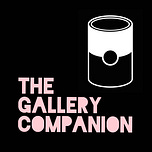Here’s a question: how often does art make you laugh? The other day I was standing in front of Marcel Duchamp’s famous ‘readymade’ artwork Fountain (1917) at Tate Modern with a group of students. It’s a manufactured, mass-produced urinal placed on its side on top of a pedestal, and is considered to be one of the most significant artworks of the 20th century because it questioned the value of art and how it is made.
I asked them what they thought it meant. As we all stood there solemnly looking at the piece, one of the students started to laugh. He couldn’t explain why, although perhaps it was his response to the absurdity of being asked to contemplate the deeper meanings of a toilet. The other students started to laugh too, and looked almost sheepish as they did so.
It made me think about the culture of contemplating art, particularly in the hushed environment of art galleries, and how we approach it with a seriousness that often precludes laughter. I wonder whether we are so primed to search for deeper meanings and wholesome lessons from visual art that we police ourselves in our responses. Laughing doesn’t always seem like the ‘correct’ thing to do.
I saw a really interesting lecture recently about the science of laughter. How laughter has evolved over time in mammals, the ways that humans use laughter to communicate much more than just humour, and the importance of it in our interactions with each other. Its function is primarily social, it’s a complex non-verbal form of communication that we use to get us through all sorts of situations with people. Laughter can show our playfulness, our understanding and recognition of others, and we use it to navigate stressful situations.
I wonder whether the student’s response to Duchamp’s urinal was not that he actually found the artwork funny but because he wasn’t sure what it was supposed to mean, and he navigated his way out of a situation he found difficult by laughing.
There are plenty of artists who use humour in their work. I’m thinking of David Shrigley, for example, and Banksy, and Maurizio Cattelan. But I have to say, their work never makes me actually laugh out loud, perhaps because there always seems to be an underlying *something* to it that casts a bit of a questioning shadow.
There's only one artist as far as I can recall whose work really does make me laugh, and that’s Martin Creed. He is a British artist, whose practice spans various media, including sculpture, painting, drawing, video, and performance art. He is perhaps best known for winning the Turner Prize in 2001 for a controversial piece titled Work No. 227: The lights going on and off. It was an installation in an empty gallery space in which the lights came on at intervals.
If I had to characterise the thread that runs through all Creed’s work I would say it’s something to do with uncertainty. Being sure one minute and then unsure the next; having a determination to behave in this way or do that thing, followed not long afterwards by a lack of clarity once again.
In this 60 second video Turn Over a New (2020), for example, Creed captures in just a few repeated words the pressures we feel and the resolutions we make to try harder, do better, keep focused — and the inevitability of falling off the wagon. He speaks in such an earnest manner that it amplifies how ridiculous it is. He concisely communicates a pattern of thought that I recognise in myself:
Not all of Creed’s work makes me laugh, and now that I think about it, it’s just his performance art that does. Perhaps it’s because it is so close to comedy that if you didn’t know he was a visual artist, you might think he is a comedian.
I haven’t quite figured out yet what my thoughts are on this subject, except to clock that visual art rarely makes me laugh — and I wonder why. I would really like to know what you think about this. Do you agree that visual art is rarely funny? And are there any artists whose work makes you genuinely laugh?















